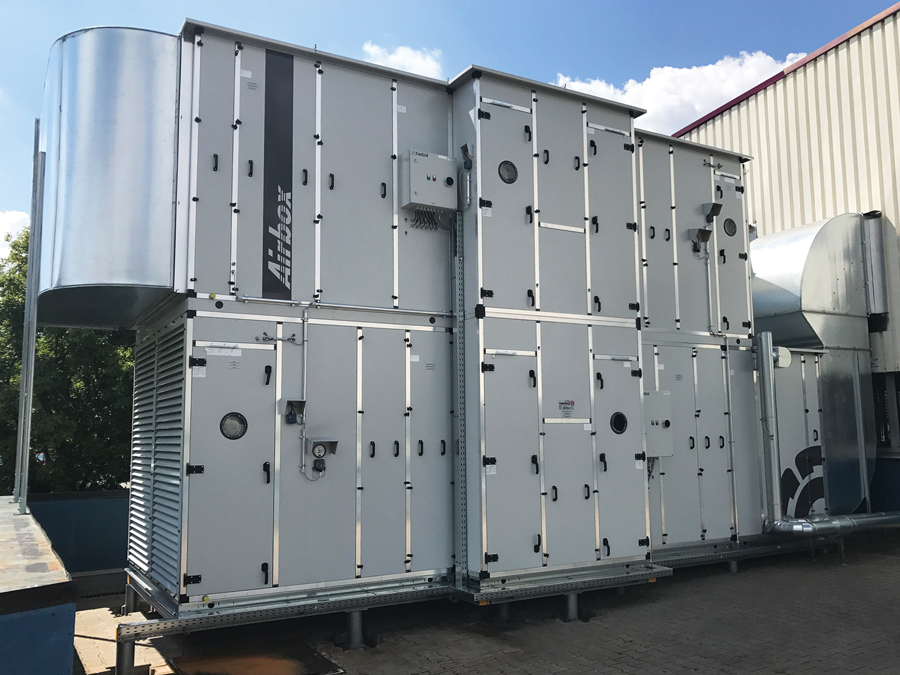Evaporative-Cooling Air Conditioning Systems
Evaporative-cooling air conditioning systems use the cooling effect of the evaporation of liquid water to cool an airstream directly or indirectly. It could be a factory-assembled packaged unit or a field-built system. When an evaporative cooler provides only a portion of the cooling effect, then it becomes a component of a central hydronic or a packaged unit system.
An evaporative-cooling system consists of an intake chamber, filter(s), supply fan, direct-contact or indirect-contact heat exchanger, exhaust fan, water sprays, recirculating water pump, and water sump. Evaporative-cooling systems are characterized by low energy use compared with refrigeration cooling. They produce cool and humid air and are widely used in southwest arid areas in the United States.
Desiccant-Based Air Conditioning Systems
A desiccant-based air conditioning system is a system in which latent cooling is performed by desiccant dehumidification and sensible cooling by evaporative cooling or refrigeration. Thus, a considerable part of expensive vapor compression refrigeration is replaced by inexpensive evaporative cooling. A desiccant-based air conditioning system is usually a hybrid system of dehumidification, evaporative cooling, refrigeration, and regeneration of desiccant (refer to Chap. 29).
There are two airstreams in a desiccant-based air conditioning system: a process airstream and a regenerative airstream. Process air can be all outdoor air or a mixture of outdoor and recirculating air. Process air is also conditioned air supplied directly to the conditioned space or enclosed manufacturing process, or to the air-handling unit (AHU), packaged unit (PU), or terminal for further treatment. Regenerative airstream is a high-temperature airstream used to reactivate the desiccant.
A desiccant-based air conditioned system consists of the following components: rotary desiccant dehumidifiers, heat pipe heat exchangers, direct or indirect evaporative coolers, DX coils and vapor compression unit or water cooling coils and chillers, fans, pumps, filters, controls, ducts, and piping.
Thermal Storage Air Conditioning Systems
In a thermal storage air conditioning system or simply thermal storage system, the electricity-driven refrigeration compressors are operated during off-peak hours. Stored chilled water or stored ice in tanks is used to provide cooling in buildings during peak hours when high electric demand charges and electric energy rates are in effect. A thermal storage system reduces high electric demand for HVAC&R and partially or fully shifts the high electric energy rates from peak hours to off-peak hours.
A thermal storage air conditioning system is always a central air conditioning system using chilled water as the cooling medium. In addition to the air, water, and refrigeration control systems, there are chilled-water tanks or ice storage tanks, storage circulating pumps, and controls.


No comments:
Post a Comment